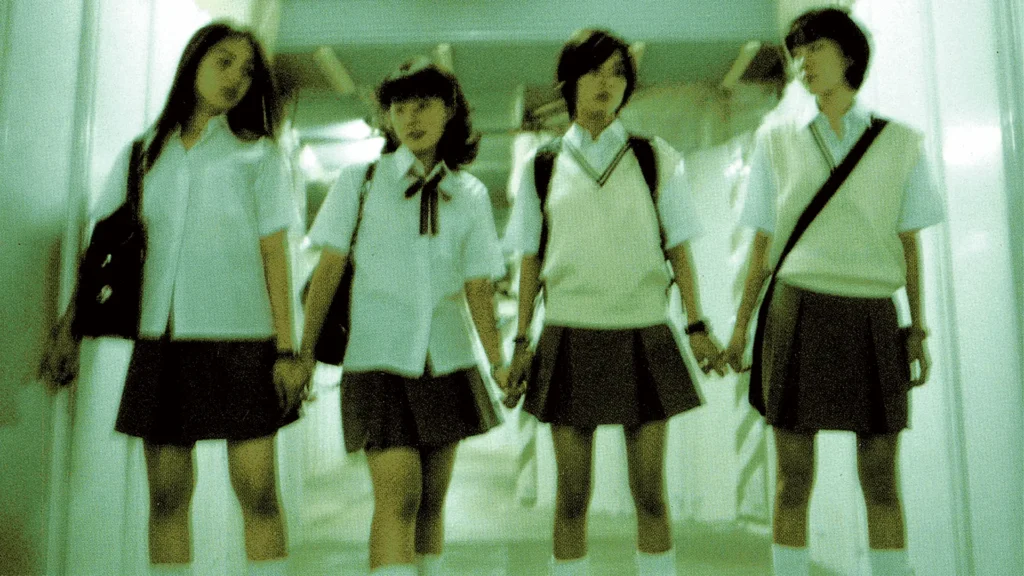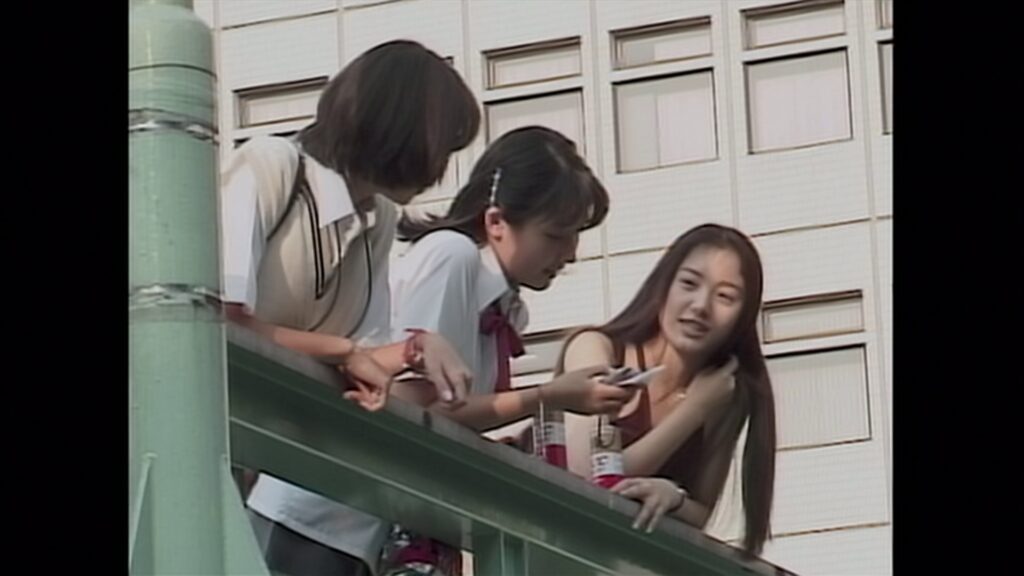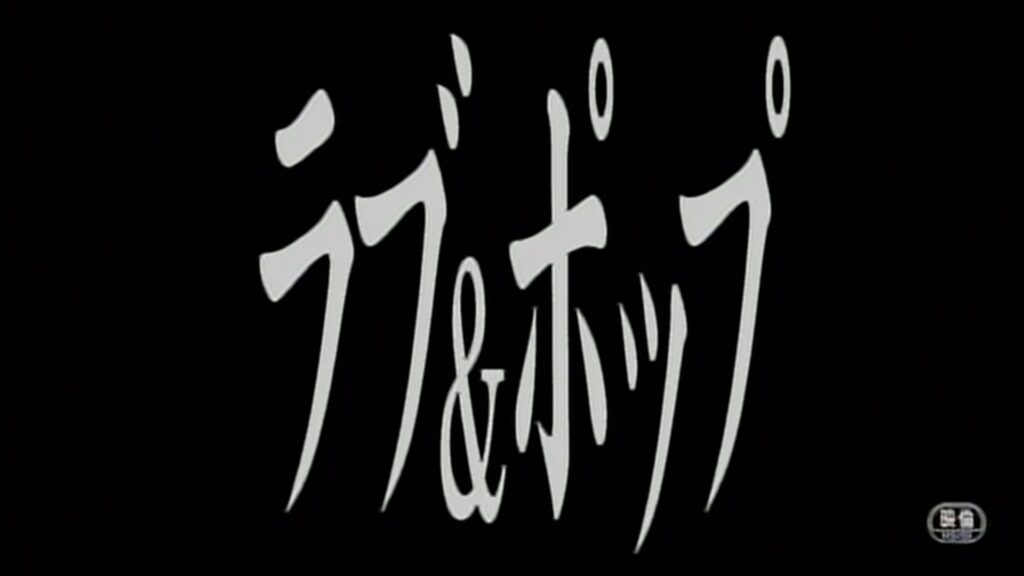Hideaki Anno’s Love & Pop Zine

In commemoration of Love & Pop’s theatrical release—opening at IFC Center for its first-ever North American theatrical run on February 21 thanks to efforts of distributor GKIDS—we present the zine that was printed by Japan Society for the film’s U.S. restoration premiere on February 1, 2025. Please find the full zine along with our film programmer’s introduction, originally included in the zine, published below:
End of a Century: An Introduction to Love & Pop
“Fingers like that deserve a topaz.”
—Ryu Murakami, Topaz
Capturing a teenager’s inner vulnerability through its mile-a-minute traversal of Shibuya-ku and continuous transference of perspective—inventively mixing CRT screens, the convex of a fish-eye lens and POV shots—Love & Pop can be seen chiefly as a young girl’s fantasy, fixated on the allure of an imperial topaz ring. Adapted from a novel by Ryu Murakami, an enfant terrible of transgressive literature and author of Audition, Coin Locker Babies and In the Miso Soup, Love & Pop is in fact, a sequel of sorts—its source material designated by an accompanying subtitle: Love and Pop: Topaz 2 (1996). The book’s predecessor, a short story entitled Topaz (1988), concerns a S&M prostitute and her schoolgirl crush on a famous musician—a “real artist” she insists—as she fantasizes about being his mistress, going so far as to purchase a topaz ring that he, in her imagined fantasy, “recommended.” Misplacing the ring after a degrading session with a client, the fleeting comfort of her fantasy collapses into loneliness. Murakami adapted his story (with some changes) in 1992 as his dark, murky feature Tokyo Decadence. The thematic throughlines of Topaz and Love & Pop are the dreams of its young women, reflected within the rosy depths of a gemstone. What is the promise of an imperial topaz?

By the mid-nineties, well into the economic atrophy of the bubble burst, enjo kosai or compensated dating had incited moral panic; the activities of young girls during work hours, often dressed in ko gyaru fashion—loose, ankle-high socks, short skirts and school uniforms—had become a signifier of society’s decline. Yet while enjo kosai has now become synonymous with prostitution, it started, according to the founder of egg magazine—a revolutionary ’90s gyaru publication—as “playing with and lowkey controlling men.” Gyaru itself was a reaction to expectations on how Japanese women should look and act, a rebellion against suffocating social pressures. The sensationalization of enjo kosai sparked pearl-clutching and outcry for the future of these young girls, and media outlets exaggerated stories of prostitution, furthering gyaru’s association with sex work and corrupted youth.
Originally planned for a late-night slot on TV until he grasped the extent of production costs needed to realize his vision, Anno’s live-action debut employs the use of consumer-grade cameras during most of its runtime (the exception being a final sequence shot on 35mm), facilitating its constant invention of unique compositions and shots, oftentimes having actors record their “real” actions. Through its use of inner monologues and existential meditations, Love & Pop lends itself to comparison with Anno’s Evangelion, applying themes he explored in the series—self-worth, isolation, loneliness, ennui—into contemporary Tokyo. Anno, however, would take exception, stating, “This is not Evangelion Part II,” and going so far as to remove the opening line of Love & Pop’s shooting script, “How disgusting,” a callback to the final line spoken in The End of Evangelion (1997). Perhaps no more than a playful reference, the events of Love & Pop were also set on July 19, 1997—the day End of Evangelion was released in theaters.

Love & Pop opens with Hiromi (Asumi Miwa) examining her outstretched, bare fingers. Adopting the turn of the century’s materialism as they tour Shibuya’s casual hangouts, idolizing brand names and flip phones, Hiromi and her friends earn quick cash by engaging in enjo kosai, often for their own amusement.The dream of the imperial topaz motivates a darker confrontation with the practice of enjo kosai, one which brings into question their casual ethos in entertaining the perversions of older men. Anno characterized it as older men seeking the “energy”—now extinguished within them—in young girls, remarking, “There’s no energy left in Japan.” As Hiromi wears the topaz, she poeticizes the experience, comparing it to the intimacy of a first kiss or one’s first time. The film’s interspersed quiet moments of introspection and lyricism reveal the profound complexities of girlhood, immersing viewers fully into the psychology of a young teen girl. And it calls into question the cost of these experiences as Hiromi descends down this more disturbing backroad, engaging in the fantasies of others while in pursuit of her own.
